#earless seals
Text
Uncharismatic Fact of the Day
Lake Baikal seals dive extremely deep to find food, reaching depths of over 400m (1300 ft). To give themselves a boost of oxygen and keep themselves warm, they have an extra 2 litres (0.5 gal) of blood circulating through their bodies!
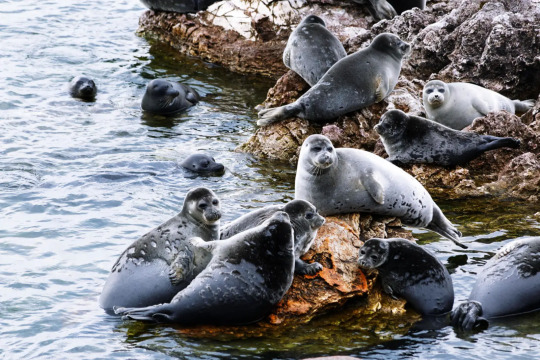
(Image: A group of lounging Baikal seals (Pusa sibirica) by Sergio Tittarini)
If you like what I do, consider leaving a tip or buying me a ko-fi!
137 notes
·
View notes
Text


Harbor seals (Phoca vitulina)
#true seals#earless seals#seals#phocids#Vancouver Island Harbour Seals#Harbour Seals#Phoca vitulina#sea side#ocean#ocean view#ocean life#pacific ocean#wild animals#animals#animal photoshoot#animal lover#animal photography#wildlife pictures#wildlife photography#wildlife#beautiful#beautiful photos#my photo#photography#photooftheday#naturecore#photoart
29 notes
·
View notes
Note
Ok. Ok. Little background on this for those that aren't Brazilian/don't speak pt: the imperative of Focus is 'Foca', which just so happens to be the same word for seal.
So there's a bunch of these official govt psa's about 'focus on [important thing]' that are just. Like this. Because of that pun



^ specifically traffic safety ones. I saw this guy while taking my traffic knowledge test lol
Today's Seals Are: Focal Point
#mod ribbon#seals#pinniped#daily#asks#fictional species#← putting it in this tag since the root phoca/foca refers to earless seals and this looks to be an odd mix of both eared and true seals#otariidae#phocidae
463 notes
·
View notes
Text

8 notes
·
View notes
Text
I was gonna change my url to otarioids for April fools but I forgot so can u guys all just imagine I did that
3 notes
·
View notes
Text
#2 - Bouncing seals!

Source. Posted April 2nd, 2020.
Translation:
Thanks to everyone who followed us right away 🌼
Currently, there’s over 20 seals at Seal Land.
Seals are like us.
They have different appearances, but they also have different personalities. 🙂 💭
Starting tomorrow, we want to introduce you to the seals one by one!
Look forward to it 🌱
It took me a while to figure out how to post videos, but I'm glad I did because who doesn't want to see bouncing cute seals?
3 notes
·
View notes
Text
Should I make a list of top 10 funniest animals
#I have some ideas#animals I want to include are lions sea lions all earless/true seal species gorilla and black header weaver#also honey badger and may add Canada geese and black tailed prairie dogs??#oh and Komodo dragons
0 notes
Text
Wet Beast Wednesday: walrus
There are a lot of iconic arctic animals, such as the polar bear and narwhal, but my personal favorite is the walrus. Known for their large tusks, prominent whiskers, and habit for busting myths creepy eyes, walruses are unique amongst the pinnipeds. Most people know of the two main groups of pinnipeds: Phocidae, the earless or true seals and Otariidae, the fur seals and sea lions. Walruses however are in a class of their own, being the only surviving species of their own family: Odobenidae. A weird fact that I learned researching for this is that taxonoimists used to think Odobenids evolved from bears before later reclassifying them alongside the other pinnipeds. Old-timey taxonomy was wild and came up with some absolutely unhinged ideas. Like they used to think that microbats and megabats weren't related, instead classifying megabats as primates.

(image; a walrus sitting on an ice flow. It is a large, brown mammals with short limbs that end in flippers. Its head has a wide, blunt snout and two long tusks emerging from the upper jaw)
There is one species of walrus, Odobenus rosmarus, divided into two subspecies based on location: the Atlantic walrus (O. r. rosmarus) and Pacific walrus (O. r. divergens). The two subspecies are still very similar and genetic testing indicates they diverged between 750,000 and 500,000 years ago. There used to be a third listed subspecies from the Laptev sea, O. r. laptevi, but they have since been reclassified as a population of the Pacific walrus. Walruses are very large, being the third largest pinnipeds after the two elephant seal species. The Pacific subspecies is larger than their Atlantic brethren with most males reaching an average weight between 800 and 1,700 kg (1,800 to 3,700 lbs). A few males have been known to grow considerably larger than average. Male Atlantic walruses average about 900 kg (2,200 lbs). In both subspecies, females are about 2/3 the size of males and have shorter tusks. a large portion of their weight comes from the thick layer of blubber under their skin that helps them stay warm. Both subspecies have an average length between 2.2 and 3.6 meters (7.4 to 11.8 ft). Walruses have hind flippers that can turn forward to act like feet, letting them crawl on all fours like sea lions. Like true seals, they have no external ears. The skin is very thick and mostly bald. They are born with brown skin that becomes lighter as they age. While swimming, the blood vessels in the skin construct to reduce blood flow and limit heat loss, which makes them considerably lighter, almost white. Males have skin nodules called bossed around the neck and shoulders. Their creepy eyes are the result of eye sockets with no roof and powerful extraocular muscles that let the eyes protrude out of the skull and look both forward and sideways. The famous mustaches are composed of 400-700 thick whiskers. The whiskers are attached to muscles and have both nerve ending and blood supply. They are incredibly sensitive sense organs and a walrus can identify objects as small as 2mm with its whiskers. Their lips are muscular and flexible and aid in creating a large variety of noises.

(image: a close-up of a walrus's face, showing its prominent whiskers and small eyes. Its mouth is open, revealing its tongue)
youtube
How come the walrus can whistle but I can't? (video: a walrus in a zoo being instructed by its handler to make multiple vocalizations)
Of course the most famous features of walruses are their tusks. These two large canines can reach a meter in length and are larger in males than females. The tusks have a number of uses in both sexes, though males use them more. In both sexes, they are used to help dig breathing holes in sea ice, hang onto ice and help the walrus climb out of the water. Males also use their tusks in displays of dominance, especially during mating season. Larger tusks are a sign of dominance and typically the walrus with the largest tusks will win standoffs. If a standoff escalates from posturing to a fight, they will use their tusks as weapons. They tend to strike around the neck and shoulders and the skin nodules in those areas help protect males from each other's tusks. It was formerly believed that walruses would use their tusks to dig for prey on the sea floor, but this is no longer believed to be the case.

(image: a walrus skull showing the tusks)

(image: a walrus using its tusks to hang onto the ice and keep its nostrils above the water)
Walruses spend a lot of their time searching for the food they need to support a body that big. They prefer forging along the continental shelf and spend much more time in shallow water than other pinnipeds. While walruses have been tracked diving 500 meters deep, the majority of dives are much more shallow. The vast majority of a walrus's diet consists of seafloor-dwelling invertebrates including tubeworms, soft corals, tunicates, crabs and shrimp, sea cucumbers, and mollusks. While that's a wide palette, their absolute favorite food is clams. To hunt, walruses drag their noses and the forward surface of their tusks through the sediment and use their whiskers to search for food. This stirs up the sediment and releases nutrients back into the water column, a process balled bioturbation. Many foods can be swallowed whole or chewed, but they have a special feeding style for clams and other bivalves. Walruses will hold the bivalve in their mouths and use their flexible lips to form a water-tight seal around it. It then withdraws its tongue into its mouth to create enough suction to suck the bivalve meat right out of the shell. So important is this strategy to feeding that the shape of their mouths is specially adapted to it. Walruses are also known to feed on seals, though how much of that is due to hunting or scavenging is unknown. Additionally, they will scavenge whales, may hunt walrus trapped under sea ice, and have been seen catching and eating birds.
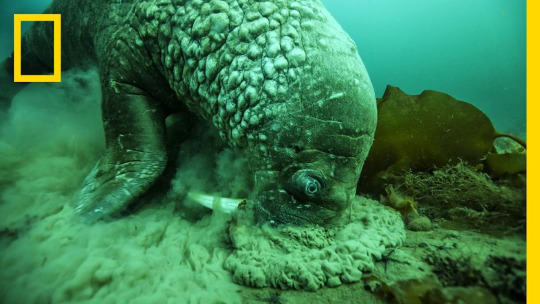
(image: a walrus foraging for food underwater. It has its snout pressed into the sea floor and is kicking up a large amount of sediment. Still from a National Geographic video)
Walruses are social and migratory, traveling south for the winter and north for the summer in aggregations that can be tens of thousands strong. They will haul out onto land or sea ice in huge numbers, blanketing the landscape in blubber and tusks. While these aggregations are preferred, they are not considered a true social species as they do not aid each other when together. Walruses on land or ice are skittish and will spook easily. Being startled can lead to stampedes while the walruses flee back to sea. Sometimes, walruses will be trampled to death during these stampedes. During mating season, the normally cordial walruses become much less friendly to their neighbors. Breeding seasons lasts from January to March. During this time, males will gather in the water around females in heat and compete for the change to get to that nice walrussy (I will not apologize). This is usually done via bellowing and posturing with the tusks, but may escalate to fights. While males become sexually mature around age 7, they often do not become large and strong enough to secure mates until around age 15. Females become sexually mature between 4 and 6 years old. Curiously, females enter heat twice per year, but males are only fertile once per year. Gestation takes up to 16 months and calves are born able to swim and weighing up to 75 kg (165 lbs). Females with calves move away from the large aggregations, possibly to keep their calves from being crushed in stampedes and possibly to make it harder for predators to detect their scent. Nursing lasts for over a year, longer than in many pinnipeds. Walrus milk is fattier than that of land mammals, but less fatty than that of true seals, forcing walrus mother to nurse longer. Even after being weaned, walruses may spend up to 5 years with their mothers. Females only mate at most every two years, which gives the walrus the lowest reproduction rate of all pinnipeds. Walruses can live up to 30 years in the wild and 40 years in captivity. Male walruses have the largest penis bone of any non-cetacean both in absolute size and proportionately.
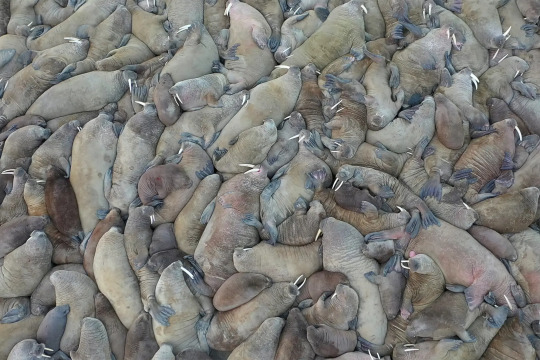
(image an aerial shot of a walrus herd on land. There are many walruses and they are so tightly packed together that no ground is visible)

"Don't talk to me or my son ever again" (image: a mother walrus with its calf. The calf is a smaller version of the mother with no tusks. The calf is sittting by its mother's side. Both are looking at the camers)
Walruses have been hunted by humans living in the arctic circle for millennia. Hunting peaked in 18th and 19th centuries when there was a high commercial demand for meat, blubber, skin, and ivory. This almost led to the extirpation of Atlantic walruses. Since then, hunting has been outlawed except by indigenous peoples, allowing the populations to recover. Now, the major threat to walruses is climate change leading to loss of sea ice needed for hauling out and breeding. The IUCN lists both subspecies as Vulnerable. They were an important source of food and other materials to the peoples of the arctic circle and appear frequently in the mythology of said peoples.

(image: a walrus tusk carved with the images of multiple fish, seals, and polar bears)
#wet beast wednesday#walrus#pinniped#marine biology#zoology#ecology#marine mammals#animal facts#biology#Youtube
503 notes
·
View notes
Text
Animal of the Day!
Caspian Seal (Pusa caspica)
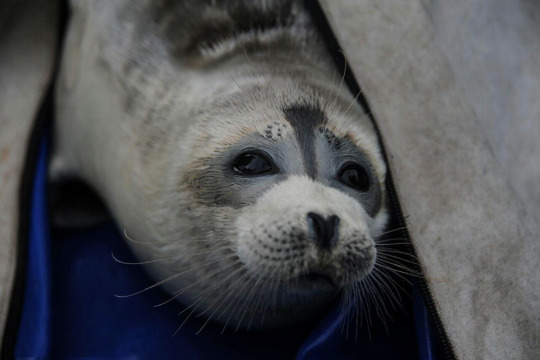
(Photo in public domain)
Conservation Status- Endangered
Habitat- Caspian Sea
Size (Weight/Length)- 63 kg; 1.3 m
Diet- Fish; Crustaceans
Cool Facts- The Caspian seal is found only in the Caspian Sea, the largest inland body of water in the world. They are the smallest earless seal species and tend to stick close to islands and the shoreline. They have adapted over the course of two million years to withstand winter temperatures of -35 Celsius and over 40 Celsius in the summer. Going from arctic to sub-tropical weather every year results in a differing diet to target the most common fish during different seasons. Eating up to a metric ton of fish every year, Caspian seals have learned how to chew through fishing nets to get an easy meal. Sadly, due to several diseases, overfishing of their prey, and poaching these seals are on the decline.
Rating- 12/10 (:3)
#animal of the day#animals#mammals#seals#tuesday#august 8#caspian seal#biology#science#conservation#the more you know
223 notes
·
View notes
Note
idk if this counts as a 'questionable do you have any facts for any seals? :o
Oh so sorry it took so long. I got some stuff to do and now it's time for some seal's facts:
Seals typically sleep on land when they have pups or are searching for warmth. When sleeping in the water, seals are usually in a position called “bottling” where their bodies (except for their snout) remain completely underwater.
Seals and sea lions belong to a group of marine mammals called “pinnipeds.” In Latin, “pinniped” means “fin-” or “flipper-footed.” There are currently 33 different species of seals. The largest seal species is the Southern elephant seal, and the smallest is the ringed seal
Earless seals, including the walrus and leopard seal, don’t look like they have ears at first glance. However, they’re actually hiding underneath the surface of their skin. What’s missing is a pinna (a visible external ear
While not related to dogs, seals share certain traits. They’re known to be curious, playful, and sociable. But remember, seals are protected by the Marine Mammal Protection Act which makes it illegal to harass, pursue, or take animals from their environment.

62 notes
·
View notes
Text
More Tiers on Kickstarter
Just posted an update on Hymn to the Earless God's kickstarter, so check that out for all the details, but I'm going to give a quick rundown here. The main thing I did was add a few high tier options.
There's now a $300 tier where you can include a brief message in game that will appear in a book in the Sealed Library of Tharna. You'll also get everything in the tiers prior to this.
There's also a $500 tier where you can work with us to incorporate your face (or a pet's/OC's/etc.) into a tree in the cursed forest, Delirium. Interacting with the tree will also give a brief message like the book. This is a limited tier; only 100 available. Here's an example of what the trees look like (fucking cool):
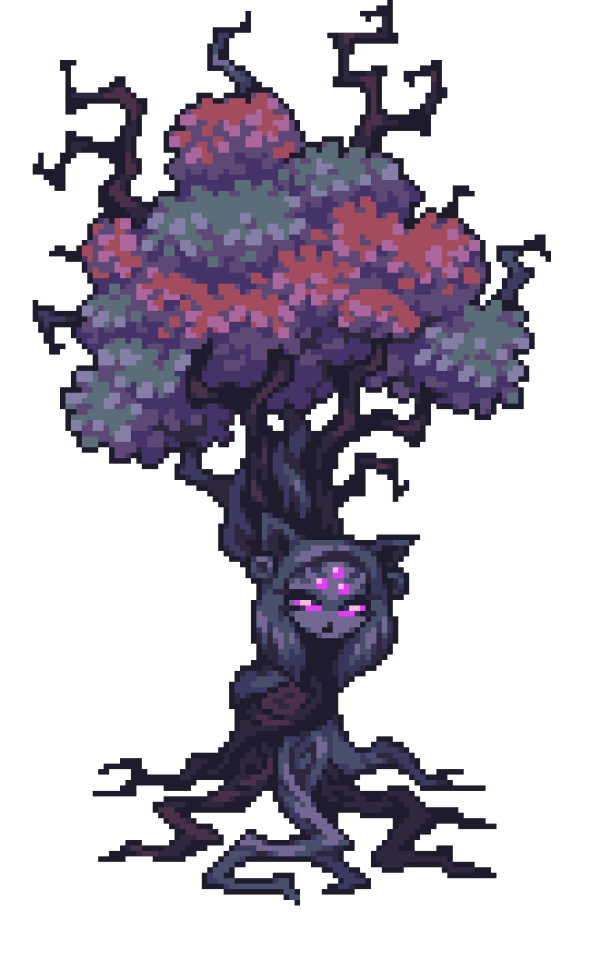
The final tier is $1000. This one's super cool: Cubesona will draw an image of you (or a pet/OC/etc.) in the style of Hymn to the Earless God. You'll get both a physical signed print and an unsigned digital version of the creepy little bug thing of your dreams.
People who contribute $5 or more to the campaign will now have the option to include their name in the credits under the "Backers" section. People who contribute $160 or more will now get their name under a "Superbackers" section.
That's the gist of it! Again, if you want way more details, make sure to check out the latest update on Kickstarter:
51 notes
·
View notes
Text
Uncharismatic Fact of the Day
When you’re eating on the go, it’s important to make sure you get as much of your meal in your mouth as possible. That’s why leopard seals can open their jaws 160 degrees; the extra width allows them to firmly grasp prey like penguins. Their molars also lock together in such a way that leopard seals can filter krill from the water, making it easy to feed while swimming.

(Image: A leopard seal (Hydrurga leptonyx)about to grab a bite by Amos Nachoum)
If you like what I do, consider leaving a tip or buying me a kofi!
#leopard seal#carnivora#Phocidae#antarctic seals#earless seals#seals#pinnipeds#carnivores#mammals#uncharismatic facts
138 notes
·
View notes
Text

Day 11: Sarcodectus magnus
Some people didn’t know about this species from Pliocene, apparently this is new extinct earless seal, more specifically a basal subfamily Monachinae.
Named back in 2020’s paleontology.
18 notes
·
View notes
Note
what are the different kinds of seals im curious
There are many different ways to categorize seals/pinnipeds, but we'll be focusing on the most integral to Seal Gameplay.
There are three families in your cast of playable characters: earless or "true" seals, eared seals, and walrus. These are then further split up in subfamilies, tribes, and genera. I'll sum up a brief overview of each subfamily's character class and the species within.
Phocinae: DEFENSIVE SUPPORT
These are the most common earlygame party members, and their support for the DPS can make or break a playthrough. You start the game with a Harbor seal along with your first party member, it needs no introduction. Some of these also splinter off into healing as well, but the Baikal seal also has an offensive supporter edge to it as its massive Perception stat lets it easily expose enemies' weak points and lower defenses. The Ringed and Ribbon seals are also very popular picks, they're simple but very effective at raising stats (ringed raises speed, ribbon attack)
Monachinae: DPS / ATTACKER
The bread and butter of any pinniped party. There's not much i can say about DPS seals, they do big damage! The most popular of these, of course, is the Leopard seal: It's a late-game add, but very worthwhile as it has the highest base attack stat, with good HP. Elephant seals are also a popular pick and synergize well with many fur seal species. Monk seals also have some support qualities, but it seems they're not used that often.
Otariinae: HEALING
Sea lions tend to range on a spectrum of focuses on either all-in-one healing or over-time healing. It's not as picked, but i often use an Australian sea lion in my party compositions for the over time healing, since it works really well with Spotted seals' shielding and DEF mechanics (walruses as well). Overall though, a Steller sea lion can work with mostly any party due to its simplicity.
Arctocephalinae: OFFENSIVE SUPPORT
You wouldn't believe just how much offensive status effects a fur seal can have up its theoretical sleeve. There are many subcategories under this character class such as focus on STUNs, enemy vulnerabilities, DMG over time, etc. Guadalupe fur seals especially are a hot topic: a lot of newbies tend to get intimidated by their risky and RNG-reliant strategies, but the more i've used them the more i can say they can absolutely be worth the risk.
Walruses: TANKING
Walruses are the only species in the Odobenidae family, so if you want a reliable tank there's just one pick. For what it's worth i don't really use tanks but i can definitely see the appeal in their shielding and DEF stats. They're also the only species that can redirect damage from an ally onto them.
Hope this helps!
#If you were talking about stuff like taxonomy wikipedia has a lot of info on that!! E.G. the cladogram on the main page for pinnipeds#I just wanted to do a funny cause ive been doing a lot of RPG stuff lately#not daily#asks#mod ribbon
231 notes
·
View notes
Text
Karelian Words - Seals
Hyleh, t'uleni, vorvani - earless seal (phocidae)
N'orppa - ringed seal (Pusa hispida)
Jiekishyleh - grey seal (Halichoerus grypus)
Kivihyleh - multicoloured seal, Ladoga seal (Pusa hispida ladogensis)
Belkka - seal pup
Räbiläs - seal paw
Maruh, meru- (seal) fat
Meraju - seal blubber, fatty seal meat
Duutišša - hole in the ice through which seals come to breathe
Hangiluuva - seal nest in snow
Laašša, hylehlaašša - stone that is surrounded by water and on which seals can be seen resting
Hukki - special, couple of feet long hook used to lift seal from the net
Hylehverkko - net used for seal hunting
Kabli - bone scraper used for cleaning fur
Keijäs - short spear, metal or bone headed ski pole used for seal hunt
N'orppaoroša - gun used for seal hunting
Belkkalakki, belkkatreuhka - fur cap decorated with sealskin, worn by village elders in northern Viena
Čuikku - parka made from seal fur most often worn by fishers
Hylehšäpäkkähät - legwarmers made from seal fur
Perepreättä - fisher's apron made from seal skin
Šošlakan'kat - traditional fur shoes made from seal fur, worn when the snow turns into watery slush
#Karjal#karelian kieli#karjalan kieli#карельский язык#karelian#karelia#karelian language#каре́льский язы́к
29 notes
·
View notes
Note
hi what is a seal
this is actually a great question! a true seal, or earless seal, belongs to a group of marine mammals known as pinnipeds, which is Latin for "flipper-footed!" there are three families in the Pinnipedia order: Odobenodae (walruses), Otariidae (sea lions and fur seals) and Phocidae (true seals).
true seals are often confused with sea lions or fur seals, but there are actually several traits that make them unique! take a look at these photos of a harbor seal (left) and a California sea lion (right). what differences do you notice?
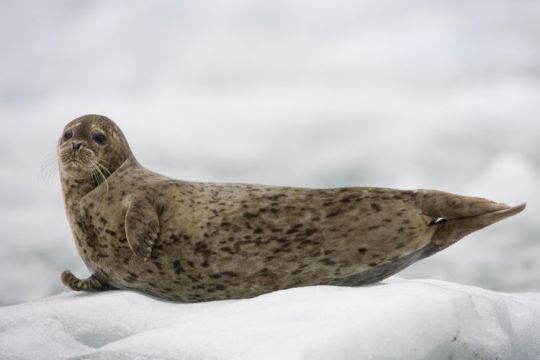

one of the biggest noticeable differences between seals and sea lions is the ears. sea lions have external ears, whereas seals just have an ear hole, which can sometimes be difficult to spot. here's a closer look:
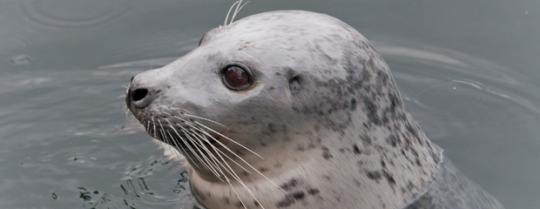
another big difference is their flippers! sea lions have longer front flippers than seals, and can also rotate their hind flippers and walk on them! seals can't do this, so on land they move in an ungainly, caterpillar-like motion called galumphing. this video of a seal release from the Cornish Seal Sanctuary will give you a good idea of what seals look like when they galumph.
youtube
kind of funny, right? don't let them fool you, though -- they can move pretty fast when they want to! these elephant seal bulls are galumphing so fast that their long noses (called proboscises) almost get in the way.
youtube
there are nearly 20 species of true seals, ranging in size from around 3.5 feet long (baikal seal) to 20 feet long (southern elephant seal). the largest seal on record was a southern elephant seal that was measured at 22.5 feet in 1913. (side note: if you have some spare time and a tape measure, and like me, you have trouble conceptualizing exactly how big this is, try measuring it out! i was a little terrified to find that this seal would have stretched from my apartment bedroom nearly all the way to the kitchen).
in conclusion, a seal is a strange and wonderful type of creature. seals are distinct from sea lions, and each species of seal is incredibly diverse and weird in its own way! here are a couple photos of these majestic beasts:

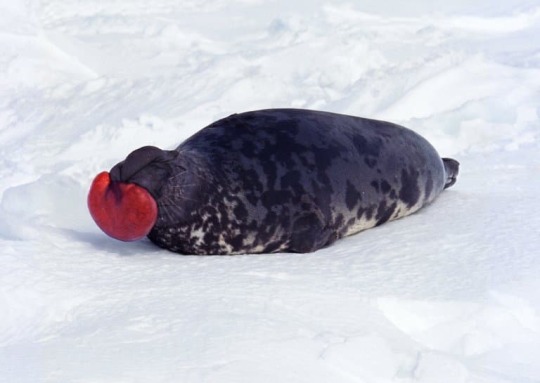




(images: baikal seal, hooded seal, grey seal, weddell seal, northern elephant seal, bearded seal)
8 notes
·
View notes